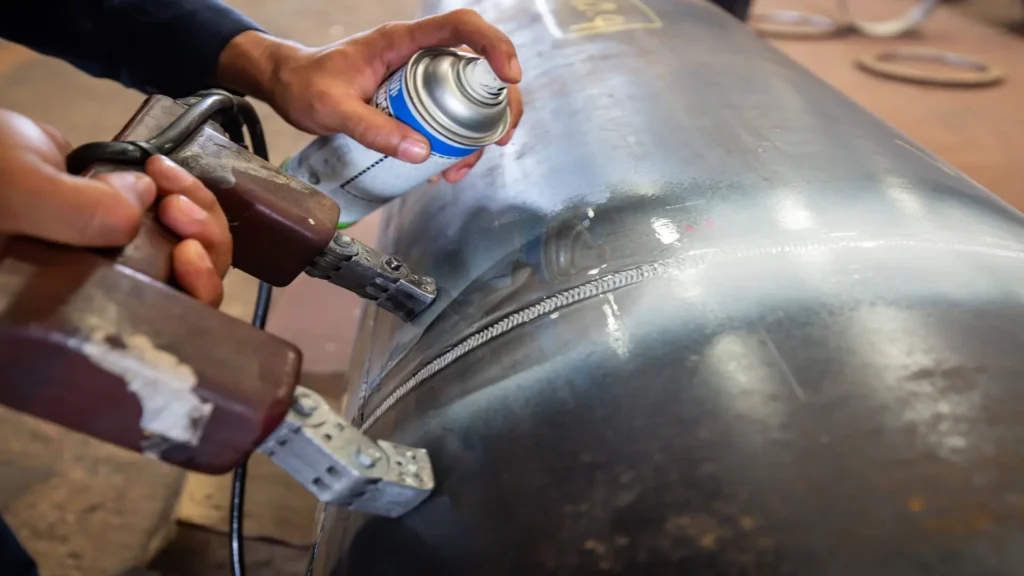How Regular Welding Inspection Madison Can Conserve You Time and Money
How Regular Welding Inspection Madison Can Conserve You Time and Money
Blog Article
The Value of Thorough Welding Evaluation in Industrial Applications
In the realm of commercial applications, the importance of precise welding evaluation can not be overstated. As we explore the diverse advantages of persistent welding inspections, one need to think about the wider effects on safety and security, dependability, and cost-effectiveness in commercial procedures.
Enhancing Structural Honesty
When it comes to welding assessment in commercial applications, enhancing structural stability is critical. The main objective of welding assessment is to make certain that the welds are capable of bearing the anticipated tensions and loads they will certainly come across in solution.
The importance of preserving structural integrity in welded structures can not be overemphasized. Badly carried out welds can result in catastrophic failures, causing expensive repair work, downtime, and also endangerment of human lives. Consequently, assessors play a critical duty in the lifecycle of industrial components, giving guarantee that the welding process delivers the wanted stamina and toughness.
In addition, advanced modern technologies, such as phased selection ultrasonic screening and electronic radiography, deal boosted capabilities in detecting potential weak points, enabling restorative actions before issues escalate. By prioritizing the honesty of welds with thorough assessment, industries can make sure functional efficiency and prolong the long life of their framework.
Recognizing Welding Issues
Identifying welding issues is a crucial aspect of making sure the safety and security and dependability of welded structures. Typical welding flaws include porosity, fractures, incomplete combination, and damaging.

Knowledgeable assessors use both aesthetic exam and progressed non-destructive screening (NDT) methods, such as ultrasonic or radiographic screening, to spot these defects. The timely recognition and rectification of welding problems are vital to keep the architectural stability and longevity of commercial parts.
Ensuring Conformity Specifications
Keeping the integrity of welded structures expands past identifying defects; it calls for adherence to rigorous conformity requirements. Compliance with well established criteria, such as those offered by the American Welding Society (AWS) and the International Company for Standardization (ISO), makes certain that welds fulfill minimal security and quality demands. These standards include a variety of criteria, including product requirements, welding treatments, and certification of welders. Adherence to these requirements is important to stop structural failings, which can result in devastating consequences in commercial applications.
Routine audits and examinations are essential in validating conformity. Assessors have to possess a detailed understanding of the pertinent standards click this link and be proficient at using numerous non-destructive screening (NDT) techniques to evaluate weld quality. By making certain that welding techniques straighten with compliance criteria, firms reduce the threat of non-conformity, which can lead to legal obligations and safety and security dangers.
Furthermore, preserving conformity not only safeguards architectural stability but likewise enhances a company's reputation in the sector. Stakeholders and customers are most likely to count on companies that regularly demonstrate a commitment to high quality and safety and security with extensive conformity. Thus, making certain conformity standards is an important part in the successful execution of welding in industrial applications.
Lowering Maintenance Prices

The application of sophisticated non-destructive screening (NDT) methods, including ultrasonic, radiographic, and magnetic fragment examinations, improves the capability to find subsurface defects without endangering the architectural honesty of components. By using these strategies, industries can substantially prolong the life span of their tools, reducing read what he said downtime and the connected economic worry of maintenance tasks.
Additionally, a robust welding assessment routine sustains the optimization of maintenance schedules, shifting from reactive to predictive maintenance methods. This positive approach not only stops unexpected failings but likewise streamlines source allotment, making sure that upkeep efforts are concentrated and efficient. Eventually, the investment in rigorous welding inspection is balanced out by the substantial savings recognized with lowered upkeep demands, contributing favorably to the general functional performance of commercial ventures.
Improving Security Actions
Welding inspection plays an essential function in this context, as it makes sure that all links and joints meet strict safety requirements. Comprehensive examinations assist determine problems such as fractures, porosity, or incomplete fusion that could jeopardize structural stability.
To enhance precaution, taking on advanced non-destructive screening (NDT) strategies is necessary. Techniques like ultrasonic testing, radiographic screening, and magnetic bit evaluation enable in-depth evaluation without damaging the structure. These innovations enable assessors to identify concealed defects early in the building process, facilitating prompt rehabilitative activities. Carrying out a robust top quality control system that includes routine training for inspectors and welders ensures adherence to established security criteria.
Lastly, fostering a culture of safety and security within the organization highlights the importance of extensive welding inspections. Urging open communication and collaboration among welders, engineers, and inspectors contributes to a shared commitment to security quality. Welding Inspection Madison. In doing so, markets can protect their operations, protect personnel, and preserve public trust

Conclusion
Complete welding inspection is important in commercial applications, considerably improving structural integrity and dependability. Ultimately, the thorough implementation of welding inspections plays an important role in maintaining functional effectiveness and safety in industrial setups.
As we check out the multifaceted benefits of persistent welding inspections, one should consider the wider effects on safety, reliability, and cost-effectiveness in commercial operations.
The primary objective of welding assessment is to make certain that the welds are qualified of bearing the anticipated loads and stress and anxieties they will encounter in service. Effective welding assessment plays an essential role in lessening these expenses by ensuring the integrity and longevity of welds, therefore reducing the danger of premature failings.Detailed welding check these guys out evaluation is important in commercial applications, dramatically enhancing architectural integrity and reliability. Eventually, the diligent execution of welding evaluations plays an important role in preserving operational effectiveness and safety in commercial settings.
Report this page